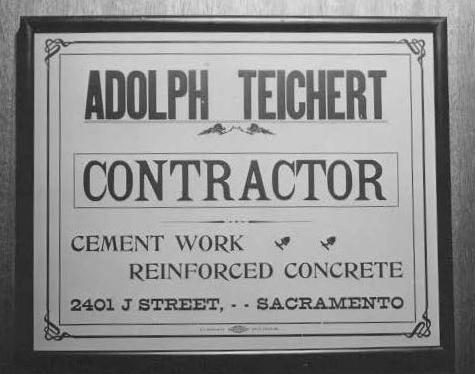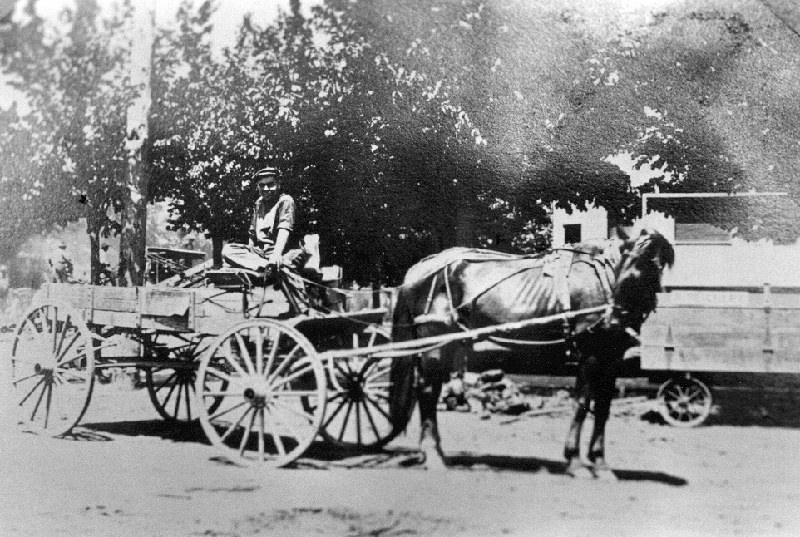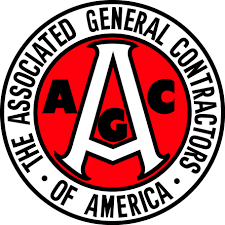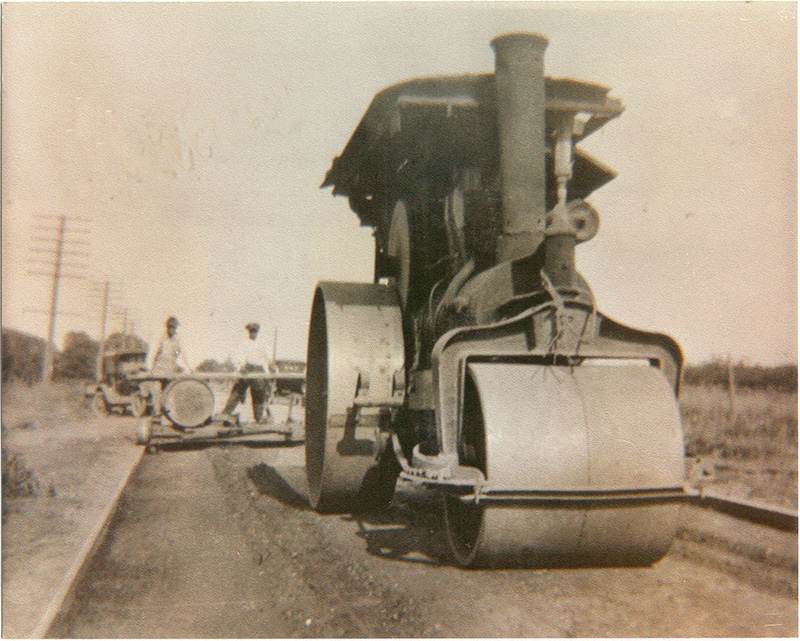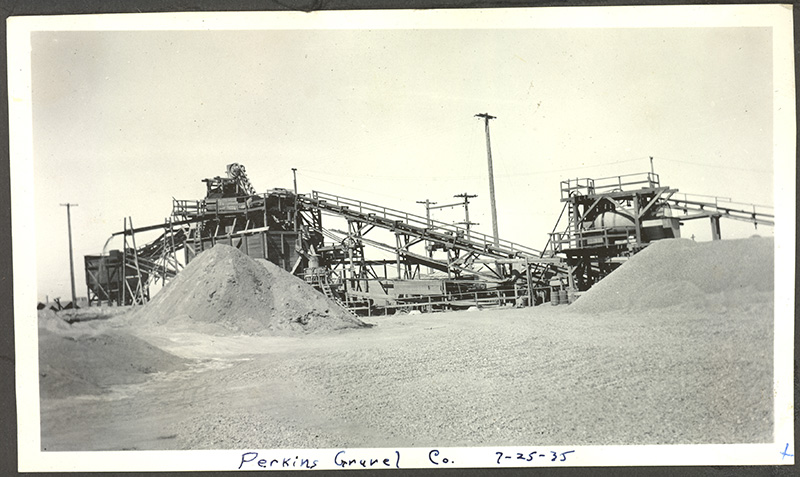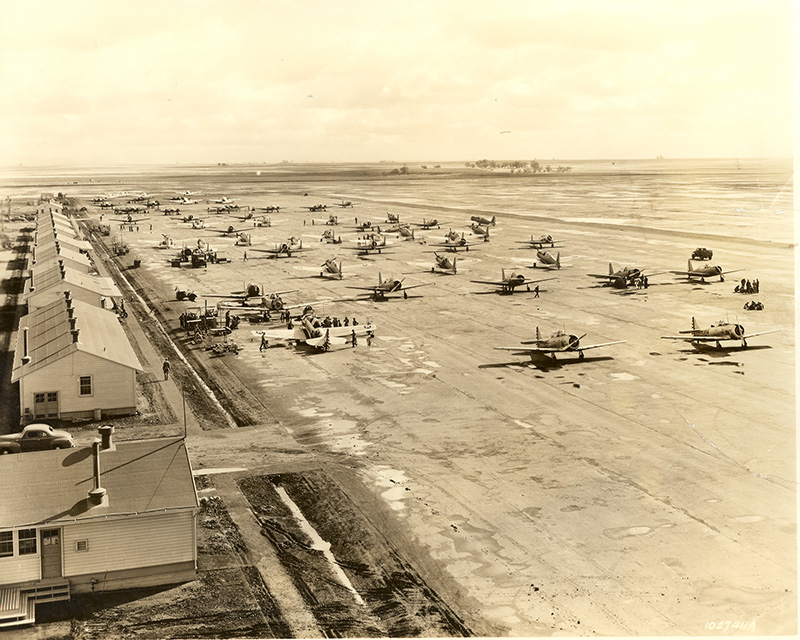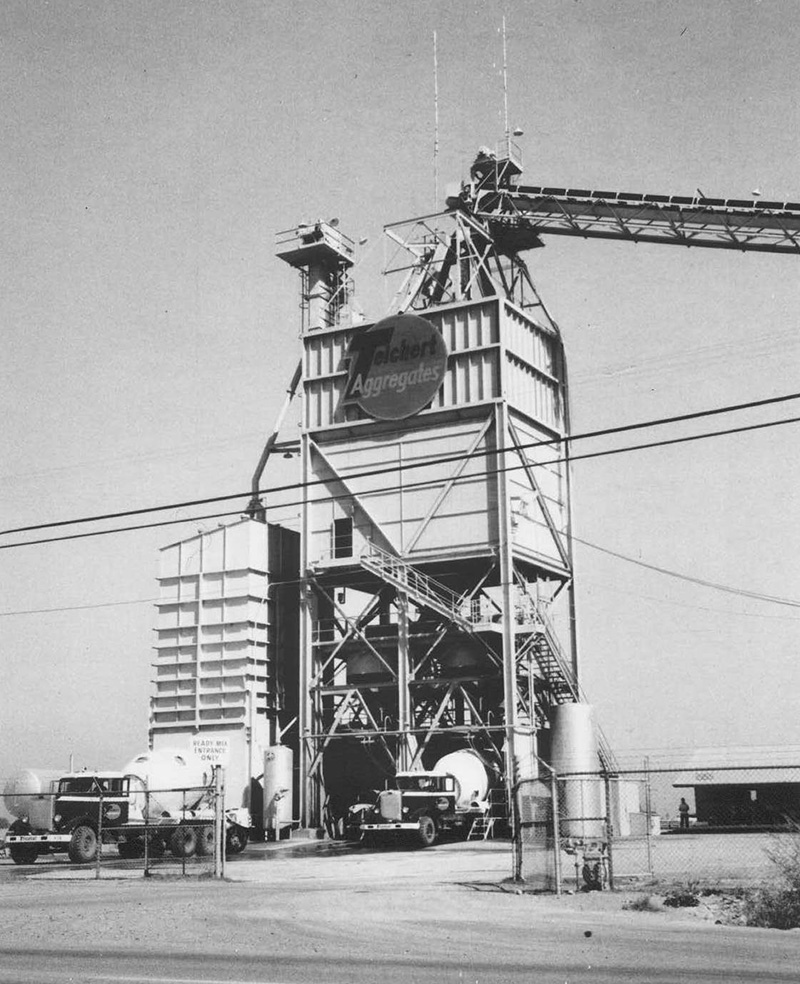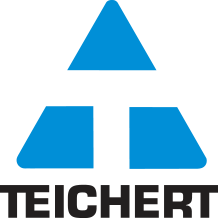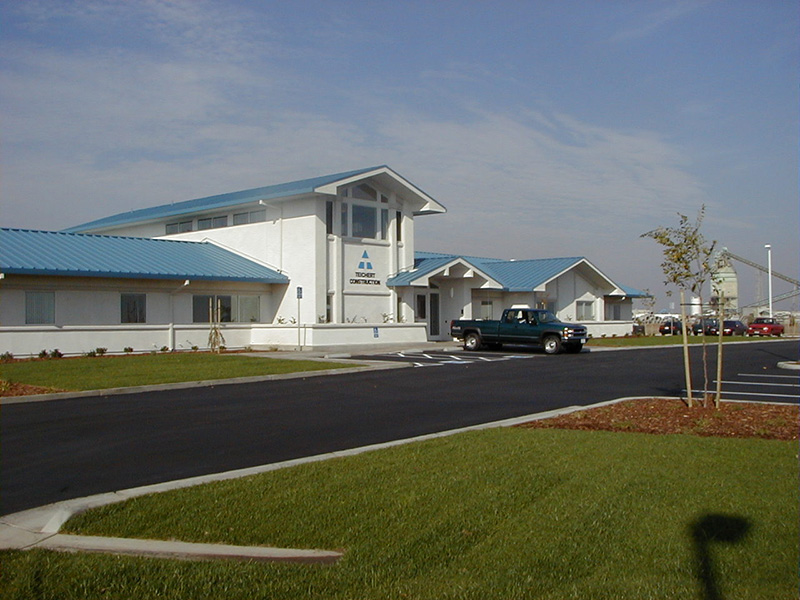
As the West continues to flourish, Teichert and our family of operations will be there when it all happens – as we have been since 1887.
Adolph Teichert immigrated to New York from Germany in 1866, and he was recruited by the California Artificial Stone Paving Company in the 1870’s. His craftsmanship was renowned, and some of his earliest work can still be seen in Golden Gate Park and near the Mark Hopkins Hotel in San Francisco. He came to Sacramento to work on laying the sidewalks around the original State Capitol building. He then started his own business in 1887 by building walkways, cellar floors, sidewalks, fencing, and other projects. Adolph was joined in the company by one of his four children, Adolph Jr., and the two of them grew the business. Additionally, they helped establish the Northern California Contractors Association – which later became the Northern California chapter of the Associated General Contractors of America.
Over the years, Teichert has grown into a diverse mix of businesses, most notably Teichert Construction and Teichert Materials.
And, with our commitment to our family of employees, high quality of work, strong customer satisfaction, and giving back to the community, Teichert will continue to flourish in the 21st century and beyond.
Teichert Timeline
-
1850s to 1900s
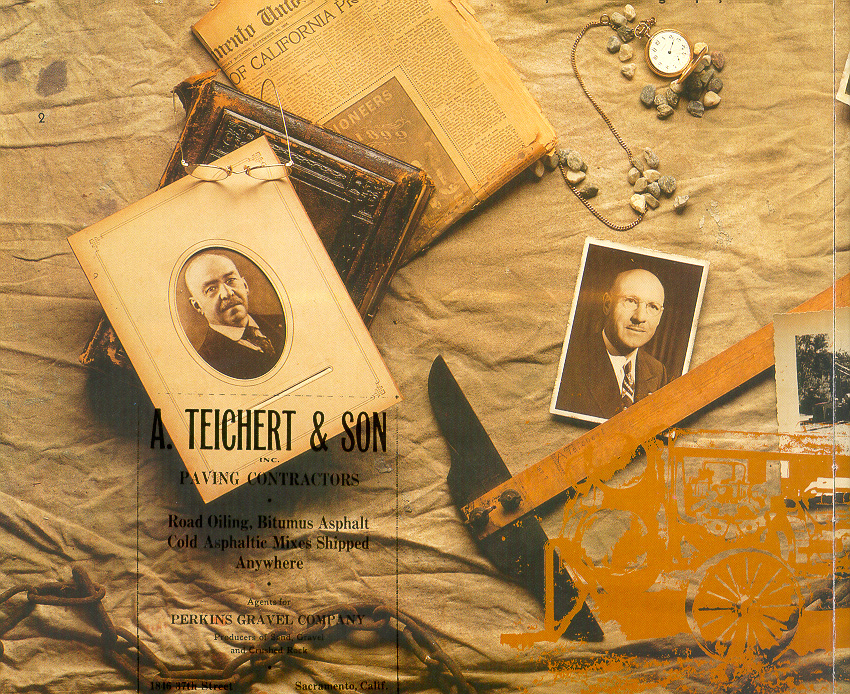
John Julius Adolph Teichert was born in Nienstedten, Germany on November 20, 1854.
When he was 12, Adolph as he was known lost his father and soon began his apprenticeship to learn his father’s trade as a stonemason.
At 17 years old, Adolph had completed his apprenticeship and immigrated to the United States. He lived and worked in New York for a time before being hired by the California Artificial Stone Company in 1875. He was brought to San Francisco to supervise the construction of a new type of concrete pavement using the Schillinger Patent method. Early projects Adolph supervised included work on sidewalks for mansions in Nob Hill and pavement around the Mark Hopkins Hotel and Golden Gate Park. Some of his original sidewalks from this time period can still be found near the Mark Hopkins Hotel and in Golden Gate Park.
The California Artificial Stone Company was awarded the contract in 1877 to construct sidewalks and other concrete work around the State Capitol Building in Sacramento, and Adolph Teichert was named superintendent for this work. (Image 000106-1868 Building the Capital.tif) (historical image of the building of the state capital for this section of history)
In 1879, Adolph became a naturalized citizen and married Carrie Louise Knaull. The couple had four children, three girls and one boy. Their only son, Adolph Teichert, Jr. was born in 1885.
After working for the Artificial Stone Company for roughly ten years Adolph Teichert decided to start his own business. On August 15, 1887 the Sacramento Record-Union published an advertisement reading “Artificial Stone: Adolph Teichert, 2116 M Street, Sacramento. Manufacture of Artificial Stone for Sidewalks, Garden Walks, Carriage Drives, Stable and Cellar Floors, Fencing, Coping, etc. Leave orders at 908 Ninth Street.” This was Adolph Teichert’s opening public statement as a self-employed businessman.
Fun Facts:
At the time the company was founded, California was only 37 years old, the Transcontinental Railroad had only been completed for 18 years, and Sutter’s Fort was just 48 years old.
-
1900s to 1910s
A Son Joins His Father
The fledgling business enjoyed early success by providing concrete work around the greater Sacramento area for projects such as alleyways, sidewalks, and carriage drives.
A contract dated March 20, 1894 called for the construction of concrete walks in the State Capitol grounds at a cost of 10 and 7/8 cents per square foot, work remodeling the Hale Brothers building in Sacramento in 1910, and a role in the construction of the original Thomas-Diggs building at 3rd and R in Sacramento in 1911.
After spending his youth attending schools in Sacramento and helping out his father, Adolph Teichert, Jr. pursued an engineering degree from the University of California at Berkeley. After graduating in 1908, he spent the following few years working in the construction industry. In 1912, Adolph Jr. was convinced by his father to become his partner in the concrete paving business. This new partnership took the name of A. Teichert & Son.
Shortly thereafter, the newly formed partnership added highway construction to its scope of work when the company was the successful bidder for one of the earliest highway contracts awarded by the newly organized State of California Highway Department (later the California Department of Transportation, known as “Caltrans”). Contract A2 was for the construction of a six-mile portion of concrete highway from Steven’s Creek Bridge to Miliken’s Corner near San Jose. On this date, Adolph Jr. joins the firm, and the company becomes A. Teichert & Son.

In 1915, the pioneering partnership began the effort to organize their profession. Meeting with representatives from 12 other contracting groups in the San Francisco offices of W.A. Bechtel, the two helped form a local association they called the Northern California Contractors Association. Three years later, the group affiliated with the Associated General Contractors of America.

Also in 1915, the firm built its first “hot plant” to help serve the growing need for asphalt paving materials. The small plant, in downtown Sacramento, near 24th and J Streets, gave rise to what is now Teichert Materials.
Between 1916 and 1918 the company completes the Sacramento Bypass (Weir) project; however, the company’s first major financial setback arose out of this job. Adolph Sr. was not convinced the project would be beneficial for the company to pursue, but Adolph Jr. was eager to win such a large contract, so he took personal financial responsibility for any losses. With the declaration of war and a shortage of workers and equipment, the financial loss on the bypass job totaled in the tens of thousands of dollars, which Adolph Jr. paid out of his own pocket for quite some time.
-
1920s to 1930s
Teichert & Son shifted its concentration by the 1920s from sidewalks to primarily building roads and highways in the developing countryside of Northern California.

These roads included the main highway from Davis to Winters and almost all of the city of Davis’ surface area including the University grounds. The company also paved most of the City of Woodland, downtown Placerville, and built roads and highways from Fresno to Kingsburg and Galt to Thornton.
The partnership continued to grow, and in 1922 P. W. Schoeningh joined the firm as its first administrative manager. Mr. Schoeningh served Teichert for over 50 years in positions such as Executive Vice President, President, and Chairman of the Board.
The company incorporated in 1927 with Adolph Teichert, Sr. as President, Adolph Teichert, Jr. as Vice President, and P.W. Schoeningh as Secretary-Treasurer. The firm became known as A. Teichert & Son, Inc. Its offices were at 37th and R street in Sacramento.
On August 24, 1929 A. Teichert & Son, Inc. received California State Contractors License number 8. This license, still in use today by Teichert Construction, is the oldest active contractor’s license in the state of California.
Adolph, Jr. serves as President of the Northern California branch of the Associated General Contractors in 1931.
The company began the production of rock products in 1932 under the trade name of Perkins Gravel Company, with their first crushing plant located at a gravel pit near the Sacramento county town of Perkins. It later became known as Teichert Aggregates.

On September 11, 1935 the Sacramento Bee reports on the use of the first asphalt paving machine.
By 1936, the company had added the production and delivery of ready-mixed concrete using its fleet of five mixing trucks. A second crushing operation was added in 1939 with the purchase of Del Paso Rock Products Company.
In 1938 Frederick Q. Teichert, son of Adolph Jr. joins the firm. During the same year the company constructs the North Fork Dam, its first debris dam on the north fork of the American River.
-
1940s to 1950s
A. Teichert & Son, Inc. embarks on its first joint venture in 1939, a project with United Concrete Pipe and Ralph A. Bell to construct tunnels and to relocate the railroad, telephone & telegraph lines around the Shasta Dam.
This was the first of dozens of successful joint ventures for the company throughout the 1940s-1950s. These projects took Teichert throughout the West, including Southern California, Nebraska, Washington, Nevada, Arizona and Oregon.
During this same time the company opens its first Precast operation as a use for returned concrete. And the Perkins Gravel Company installs a 25-ton crusher, the first on the west coast.
World War II directed the work of the company from December 7, 1941 until the war ended. All the firm’s resources were tied to the war effort directly and indirectly with projects ranging from airports; ammunition storage facilities; runways; landing strips; roads; utilities; and water, light, and fuel systems.

At this point, A. Teichert & Son, Inc. employed 300 people, 75 of whom joined the military to help the cause. A congratulatory telegram was sent from the Secretary of the U.S. Treasury, Henry Morgantheu, who praised the firm for its allotment dedicated to war bonds.
Due to the growth experienced by the company, permanent construction district offices were established in Woodland/Davis area in 1948 and the Stockton area in 1952. The company also moved into new corporate offices located at 1931 Stockton Blvd in Sacramento.
In 1949 Adolph Jr. is elected President of the National chapter of the Associated General Contractors.
The period also saw tragedy visit the Teichert family. In 1944, Frederick died at age 29 of cancer; Adolph Sr. died in 1946 after a lengthy illness; and Adolph Jr. passed away in 1953.
Shortly after Adolph Jr.’s death, his son, Henry, joined the company as Executive Vice President and later President. Another son, Adolph H. Teichert, who served on the board of directors, returned to the company and served as a Vice President until his death in 1972.By 1957, the company takes over Del Paso Rock Products Company and soon after Perkins Gravel Co. becomes Teichert Aggregates.
-
1960s to 1970s
By the 1960s, the founding generations of A. Teichert & Son had passed, and the firm was struggling to transform from the small company entrepreneurship that had been inspired and driven originally by Adolph to the large corporate structure managed by the later generations.
In response to his own lack of construction background, Henry Teichert began to develop professional managers from within the company, and he instigated seminars, management retreats and in-house programs all to meet the challenging business environment. Henry set up a management advisory committee of young employees to groom and train future managers.
During this same time he serves as Director of the Northern and Central branches of the Associated General Contractors.Henry Teichert started the official safety program in 1959. On April 21, 1963 Argonaut Insurance Company presents Henry Teichert with a plaque for the five year lowest ratio of injuries for all its clients.
Materials operations including Del Paso Rock Products, Perkins Gravel Company, and the Tracy Rock and Gravel Company all became known as Teichert Aggregates.
In 1965 ground is broken for the new Perkins rock plant. In 1966 the first batch of rock is produces at this new Plant.

In 1968, A. Teichert & Son, Inc. officially created the Mobile Equipment division which supplies and maintains equipment to the materials and construction operations; the Teichert Land Company a wholly-owned subsidiary that manages and develops Teichert-owned property; and the Construction division with autonomous district offices in Woodland, Stockton and Sacramento.
The aggregate reserves at the Del Paso plant are exhausted, and the plant is disassembled. Ground is broken for the new corporate office on this site at American River Drive in November 1968. This is one of the more widely visible reclamation projects the company has completed. A. Teichert & Son, Inc. moves into its new corporate office.

The 1970s were a time of diversification within Teichert. In 1970 the company formed Teichert Tectonics to merchandize enzymatic products for the construction industry. The Heavy Engineering division is formed to pursue large public works project in 1972. The company’s old yard at 37th & R was turned in an ice manufacturing plant in 1974, forming the Teichert Ice Company. This part of the company was later sold.
In 1971 the current blue Teichert logo is adopted. The following year the new “Safety Green” paint scheme is adopted for the company equipment.

On February 2, 1972 Adolph H. Teichert dies and Lou Riggs follows Henry Teichert as President.
During 1970 to 1974 the company consolidated construction operations and closes district offices located in Los Angeles, Reno and Marysville. Large jobs performed were $7.5M successful bid for Highway 50 from 65th Street to Mayhew Rd., Sacramento and the Interstate 5 Hammer Lane Project in Stockton.
In 1978, the new “hot plant” at Perkins is built.
-
1980s to 1990s
The company acquired Henningsen & Sons Readymix of Placerville in 1980 and Folsom Lake Readymix of Folsom in 1981. During this same time large projects included Thorton I-5 Road and I-505 Winters to Madison and the building of Tahoe Donner and Northstar subdivisions.
The Truckee Cold Stream resources were depleted in 1984 and the plant moved to Martis Valley.
Aggregate Resource Development (ARD) department was created to concentrate on long-term permitted mining reserves.Provided concrete for the new Thomson-Diggs Building in 1987. Seventy six years earlier had a role in the construction of the original building at 3rd & R.
1989 saw the acquisition of Reiff Rock of Esparto and M.J. Ruddy, operating under Santa Fe Aggregates, Inc.
The Teichert, Inc. holding company was formed at the end of the decade.
Teichert Foundation was formed in 1990 to take a long-term view as a responsible corporate citizen. Giving back to the communities in which Teichert’s employees live and where the company conducts business is a lasting legacy of Adolph Teichert. The foundation disperses grants to a variety of organizations twice per year, in addition to its continued support of the Teichert Branch of the Boys & Girls Club of Greater Sacramento.
It was during this same time that Rock Products Magazine lists the Perkins Rock Plants as the Number One Sand & Gravel Plant in the nation.
Built new district offices in Stockton (1991) and Woodland in 1999 (pictured). The new state-of-the-art Vernalis Rock Plant in Tracy was built this same year. The first rock was processed at this “new” Vernalis Rock Plant in 2000.

-
2000s to 2010s
Judson Riggs, fourth generation of family leadership, is elected President of Teichert, Inc. in 2000, CEO in 2003 and Chairman of the Board in 2010.
From 2001 to 2010 a number of new operations were added; Cool Cave Quarry, American River Aggregates in 2001. During this same year Teichert Construction Utilities division and the new Precast facility at Signal Court opened. In 2002 Brooks Products Stockton Precast facility was added and in 2003 American River Asphalt. 2004 included the addition of Angelo Electric (later Angelo Utilities) and the Truckee Quarry. Stonebridge Properties formed to develop Teichert owned properties during 2004 as well. One year later the Fresno district construction office opened and Teichert Precast Products formed as Teichert Concrete Products was dissolved. In 2008 Central Valley Readymix was added and in 2010 American Readymix, Western Nevada Materials and Asphalt Plants of Atlas Contractors.
During this same time period major projects included the Stockton Cross Town Freeway, March Lane Grade Separation & I205 Mountain House Interchange, I-80 Donner Summit/Emigrant Gap roadwork expansion, which is the largest job procured by Teichert, employing over 350 people, the state-of-the-art Sacramento Airport Terminal B Project, which was finished in 2012.
